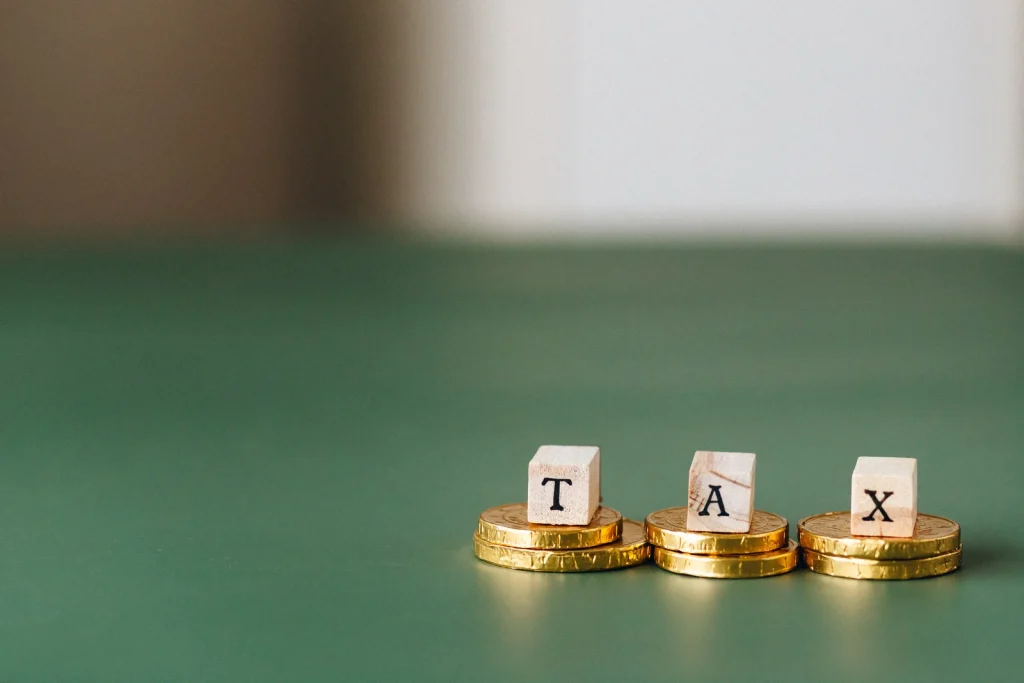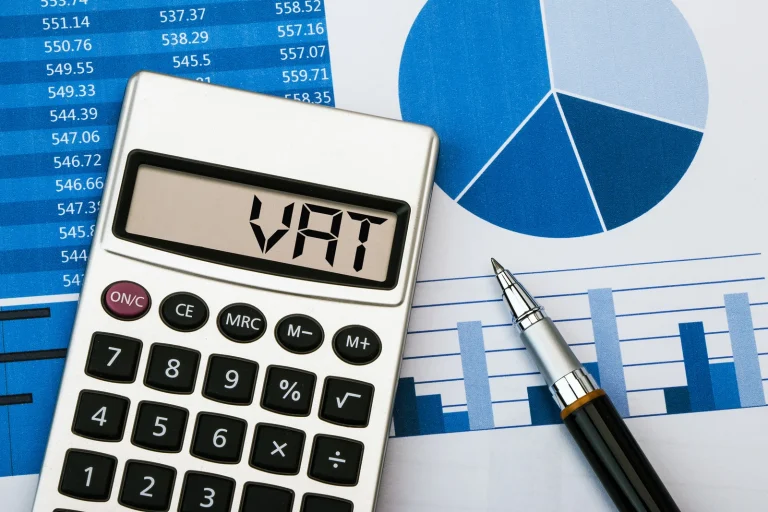INNO Accounting services
Vietnam Corporate Income Tax incentive

The standard CIT rate in Vietnam is 20% except for some activities subject to 30% to 50% tax rate such as exploration and exploitation of minerals and national natural resources. However, the government has very attractive tax incentives for businesses in some areas and industries. So what are the tax incentives? Let's find out with INNO!
Main content
What is corporate income tax (CIT) incentives?
CIT incentives are granted for businesses operating in special location (areas with difficult economic conditions, high-tech zones, etc.), businesses operating in the sectors that the government wants to prioritize development (technology, education, healthcare, etc.) in order to develop stronger regions and fields there.
CIT incentives include:
- CIT preferential rate in certain period
- CIT exemption/reductions
Preferential tax rates and beneficiaries
Preferential tax rate of 10% within 15 years
+ Income of enterprises implementing new investment projects in location with extremely difficult socio-economic conditions (according to Decree No. 218/2013/ND-CP), economic zones, high-tech zones.
+ Incomes of enterprises from implementing new investment projects in the high technology industries: scientific research and technological development; high-tech applications on the list of high technologies prioritized for development investment in accordance with the Law on High Technology; high-tech incubation, high-tech enterprise incubation; venture capital investment in the development of high technologies on the list of high technologies prioritized for development in accordance with the law on high technology; investment in construction – business of high-tech incubators, high-tech enterprise incubation.
+ Incomes of enterprises from implementing new investment projects in the following industries: invest in the development of water plants, power plants, water supply and drainage systems; bridge, road, railway; airport, seaport, river port; airports, railway stations and other particularly important infrastructure works decided by the Prime Minister; software product production; production of composite materials, all kinds of light construction materials, rare and precious materials; produce renewable energy, clean energy, energy from waste destruction; biotechnology development.
+ Investment projects on development of water plants, power plants, water supply and drainage systems; bridge, road, railway; airport, seaport, river port; airport, train station.
+ Incomes of enterprises from implementing new investment projects in the industries of environmental protection, including: production of environmental pollution treatment equipment, environmental monitoring and analysis equipment; pollution treatment and environmental protection; collection and treatment of wastewater, exhaust gas and solid waste; recycling and reuse of waste.
+ High-tech enterprises, agricultural enterprises applying hi-tech according to the provisions of the Law on High Technology (entitled to tax incentives from the year of being granted the Certificate of hi-tech enterprise, agricultural enterprise). high-tech applications.).
+ Income of an enterprise from the implementation of a new investment project in the manufacturing sector (except for a project to produce goods subject to special consumption tax, or a mining project) that meets one of the following criteria:
- Projects with minimum investment capital of 6 (six) trillion dong, disbursed within 3 years from the date of issuance of the Investment Certificate and no later than the 4th year from the year of having revenue total revenue of at least 10 (ten) trillion dong/year.
- Projects with minimum investment capital of 6 (six) trillion dong, disbursed within 3 years from the date of issuance of the Investment Certificate and no later than the 4th year from the year of having revenue total employ must more than 3,000 employees (full-time and over 1-year labour contracts).
- Projects with a minimum investment capital of 12 (twelve) trillion dong, using technology must be appraised according to the provisions of the Law on High Technology, Law on Science and Technology, disbursing the total registered investment capital within 5 years from the date of issued investment license in accordance with the law on investment.
+ Incomes of enterprises from implementing new investment projects to produce products on the list of supporting industry products prioritized for development that meet one of the following criterias:
- Industrial products supporting high technology according to the provisions of the Law on High Technology;
- Supporting industrial products for the production of products of the following industries: textile – garment; leather – shoes; electronics and information technology; automobile production and assembly; mechanical engineering, which as of January 1, 2015 cannot be produced domestically or can be manufactured but must meet technical standards of the European Union (EU) or equivalent.
Preferential CIT rate of 10% during the operation period
+ Incomes of enterprises from activities in the field of socialization, including: education, vocational training, healthcare, culture, sports and environment, judicial expertise.
+ Income from publishing activities of the Publisher as prescribed by the Law on Publishing (including the fields of publishing, printing and distributing publications according to the provisions of the Law on Publication).
+ Income from printed newspaper activities (including advertising on printed newspapers) of press agencies according to the provisions of the Press Law.
+ Incomes of enterprises from implementing investment projects – social housing business for sale, lease, lease-purchase for the subjects specified in Article 53 of the Law on Housing.
+ Income of enterprises from: planting, tending and protecting forests; income from cultivation, animal husbandry, farming and processing of agricultural and aquatic products in difficult socio-economic areas; Cultivation of forest products in areas with difficult socio-economic conditions; Producing, multiplying and crossbreeding plant and animal varieties; Production, exploitation and refining of salt (except for salt production specified in Clause 1, Article 4 of Decree No. 218/2013/ND-CP); Investment in post-harvest preservation of agricultural products, preservation of agricultural, aquatic products and foodstuffs, including investment in direct preservation or investment in leasing to preserve agricultural products, aquatic products and food.
+ Income of cooperatives operating in the fields of agriculture, forestry, fishery, salt production that are not located in difficult socio-economic areas and special socio-economic areas hard.
Preferential tax rate of 17% for 10 years
+ Income of enterprises from implementing new investment projects in areas with difficult socio-economic conditions (specified in Decree No. 218/2013/ND-CP of the Government).
+ Income of enterprises from implementing new investment projects: production of high-grade steel; produce energy-saving products; production of machinery and equipment for agricultural, forestry, fishery and salt production, production of irrigation equipment; producing and refining animal, poultry and aquatic feed; develop traditional industries (including building and developing traditional industries in the production of handicrafts, processing agricultural and food products, and cultural products).
Preferential tax rate of 17% during the operation period
– People’s Credit Funds, Cooperative Banks and Microfinance Institutions.
– For People’s Credit Funds, Cooperative Banks and Microfinance Institutions newly established in areas with extremely difficult socio-economic conditions, the preferential tax rate of 10% shall be applied within 15 years. After 15 years, the tax rate of 17% will be applied.
Tax exemptions/reductions
CIT exemption and reduction is the policy of the state not to collect CIT in some cases, or the state will collect tax at a reduced tax rate compared to the tax rate that businesses are subjected to.
So now, what tax exemption and reduction policies are there in Vietnam? Who do these policies apply to? You will find the answer right below.
Tax exemption for 4 years, 50% tax reduction for the next 9 years
+ Income of enterprises implementing new investment projects in areas with extremely difficult socio-economic conditions (according to Decree No. 218/2013/ND-CP), economic zones, high-tech zones.
+ Incomes of enterprises from implementing new investment projects in the high-tech fields: Scientific research and technological development; high-tech applications on the list of high technologies prioritized for development investment in accordance with the Law on High Technology; high-tech incubation, high-tech enterprise incubation; venture capital investment in the development of high technologies on the list of high technologies prioritized for development in accordance with the law on high technology; investment in construction – business of high-tech incubators, high-tech enterprise incubation.
+ Incomes of enterprises from implementing new investment projects in the following fields: invest in the development of water plants, power plants, water supply and drainage systems; bridge, road, railway; airport, seaport, river port; airports, railway stations and other particularly important infrastructure works decided by the Prime Minister; software product production; production of composite materials, all kinds of light construction materials, rare and precious materials; produce renewable energy, clean energy, energy from waste destruction; biotechnology development.
+ Investment projects on development of water plants, power plants, water supply and drainage systems; bridge, road, railway; airport, seaport, river port; airport, train station.
+ Incomes of enterprises from implementing new investment projects in the field of environmental protection, including: production of environmental pollution treatment equipment, environmental monitoring and analysis equipment; pollution treatment and environmental protection; collection and treatment of wastewater, exhaust gas and solid waste; recycling and reuse of waste.
+ High-tech enterprises, agricultural enterprises applying hi-tech according to the provisions of the Law on High Technology (entitled to tax incentives from the year of being granted the Certificate of hi-tech enterprise, agricultural enterprise high-tech applications.).
+ Income of an enterprise from the implementation of a new investment project in the manufacturing sector (except for a project to produce goods subject to special consumption tax, or a mining project) that meets one of the following two criteria:
- Projects with minimum investment capital of 6 (six) trillion dong, disbursed within 3 years from the date of issuance of the Investment Certificate and no later than the 4th year from the year of having profitable revenue. total revenue of at least 10 (ten) trillion dong/year.
- Projects with minimum investment capital of 6 (six) trillion dong, disbursed within 3 years from the date of issuance of the Investment Certificate and no later than the 4th year from the year of revenue. must employ more than 3,000 employees (full-time and over 1-year labor contracts).
- Projects with minimum investment capital of 12 twelve) trillion dong, using technology must be appraised according to the provisions of the Law on High Technology, Law on Science and Technology, disbursing the total registered investment capital within 5 years from the date of approval. investment license in accordance with the law on investment.
+ Incomes of enterprises from implementing new investment projects to produce products on the list of supporting industry products prioritized for development that meet one of the following criterias:
- Industrial products supporting high technology according to the provisions of the Law on High Technology;
- Supporting industrial products for the production of products of the following industries: textile – garment; leather – shoes; electronics and information technology; automobile production and assembly; mechanical engineering, which as of January 1, 2015 cannot be produced domestically or can be manufactured but must meet technical standards of the European Union (EU) or equivalent.
+ Incomes of enterprises from implementing new investment projects in the field of socialization implemented in areas with difficult or extremely difficult socio-economic conditions specified in the Appendix issued together with this Decree. Decree No. 218/2013/ND-CP.
Tax exemption for 4 years, 50% reduction of tax payable in the next 5 years
- Incomes of enterprises from the implementation of new investment projects in the field of socialization implemented in localities that are not on the list of geographical areas with difficult or extremely difficult socio-economic conditions (specified in Clause 1 of this Article). Decree No. 218/2013/ND-CP of the Government).
Tax exemption for 2 years, 50% reduction of payable tax for the next 4 years
- Income of enterprises from implementing new investment projects in areas with difficult socio-economic conditions (specified in Decree No. 218/2013/ND-CP of the Government).
- Income of enterprises from implementing new investment projects: production of high-grade steel; produce energy-saving products; production of machinery and equipment for agricultural, forestry, fishery and salt production production of irrigation equipment; producing and refining animal, poultry and aquatic feed; develop traditional industries (including building and developing traditional industries in the production of handicrafts, processing agricultural and food products, and cultural products).
- Income of enterprises from implementing new investment projects in industrial parks (except for industrial parks located in areas with favourable socio-economic conditions).
Other tax reduction cases
In addition to the above tax exemption and reduction cases, the government also has a policy of exemption and reduction for some special businesses. Specifically:
+ Enterprises operating in the field of production, construction, and transportation employ from 10 to 100 female employees, of which female employees account for more than 50% of the total number of employees or regularly use more than 100 female employees that employees more than 30% of the total number of employees regularly present of the enterprise are entitled to a reduction in CIT payable in proportion to the actual extra money spent on female employees, including:
- Expenses for job retraining for female employees in case the old occupation is no longer suitable and must be changed to another occupation according to the enterprise’s development plan.
- Cost of salaries and allowances (if any) for teachers who teach at kindergartens and kindergartens organized and managed by enterprises.
- Expenses for organizing additional health check-ups during the year such as occupational, chronic or gynecological examinations for female employees.
- Allowance for female employees after giving birth for the first or second time.
- Overtime allowance for female employees in case female employees do not take leave after giving birth.
Note: Non-business units, offices of corporations that do not directly produce and do business are not entitled to tax reduction in this case.
+ Enterprises employing ethnic minorities are entitled to a reduction in CIT payable in proportion to the actual extra money spent on school fees, housing support, and social insurance, health insurance for ethnic minorities in case they have not been supported by the State according to the prescribed regime.
+ Enterprises that transfer technology in the fields of priority transfer to organizations and individuals in areas with difficult socio-economic conditions are entitled to a 50% reduction of the CIT payable based on income from technology transfer.
Time to start calculating tax exemption/reduction and incentives
+ Tax exemption/reduction: applied from the 1st year taxable profit year or the 4th year from the year having revenue but still not have taxable profit.
+ CIT Preferential rate in certain period: from the 1st year generating revenue.
New investment projects and expansion investment projects
We see the regulations on tax incentives refer a lot to “New investment projects”, “Expanded investment projects”. So what are New Investment Projects and Expanded Investment Projects?
New investment projects eligible for CIT incentives are:
- The project is granted the Investment Certificate for the first time from January 1, 2014 and generates revenue from that project after being granted the Investment Certificate.
- Domestic investment projects associated with the establishment of new enterprises with an investment capital of less than VND 15 billion and not on the list of conditional investment fields, have enterprise registration certificate from 1st January, 2014.
- Investment projects that are independent of the projects the enterprise is currently operating (even if the project has an investment capital of less than VND 15 billion and is not on the list of conditional investment fields) with an Investment Certificate. from January 1, 2014 to implement this independent investment project.
New investment projects subject to CIT incentives as prescribed must be granted investment licenses or Investment Registraction Certificates (IRCs) by competent state agencies or permitted to invest in accordance with the law on investment.
An expansion investment project is a project that is expanded and developed from an existing project such as increase the capacity, production scale, renew technology.
An expansion investment project to be eligible for CIT incentives must satisfy one of the following three conditions:
- The historical cost of fixed assets increases by at least VND 20 billion in an encouraged sector or VND 10 billion for investment in an encouraged location; or
- The historical cost of fixed assets increased by at least 20% compared to the total historical cost of fixed assets before the project expansion; or
- The design operating capacity increased by at least 20% compared to design capacity before expansion.
In case one of the above three conditions is satisfied, the enterprise is selected:
- Apply CIT incentives of existing investment projects (remaining incentive period) to expansion investment projects; or
- Apply a separate tax exemption/reduction as a new investment projects.
Note: Taxable profit from expansion project should be separate with taxable profit on current project. Without separation, taxable profit from expansion project shall be calculated based on the ratio of the historical cost of fixed assets invested in the expansion investment project to the total cost of fixed assets.
Tax incentives procedures
Vietnam tax applies self-declaration policy, so enterprises determine their own tax incentives, preferential tax rates, tax exemption and applying periods to self-declaration and self-settlement with tax authorities.
Explore more
Related services

News
Related Posts






